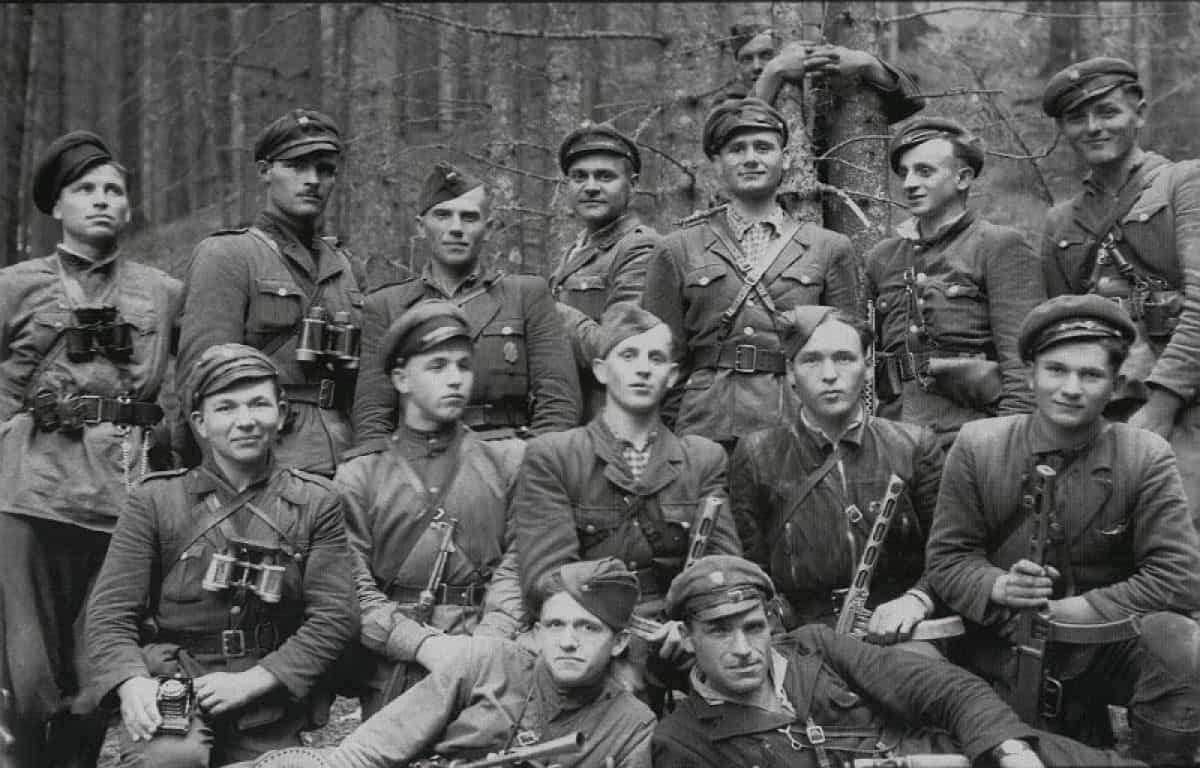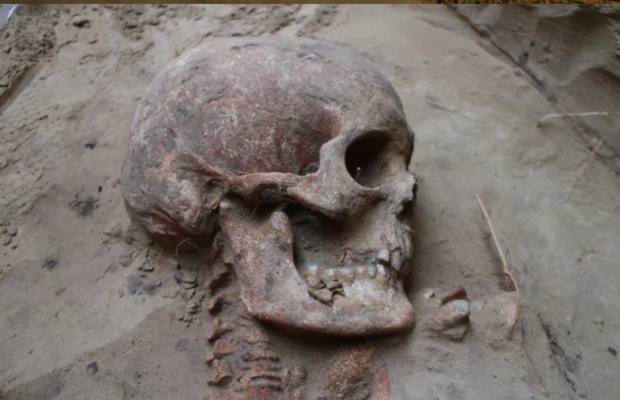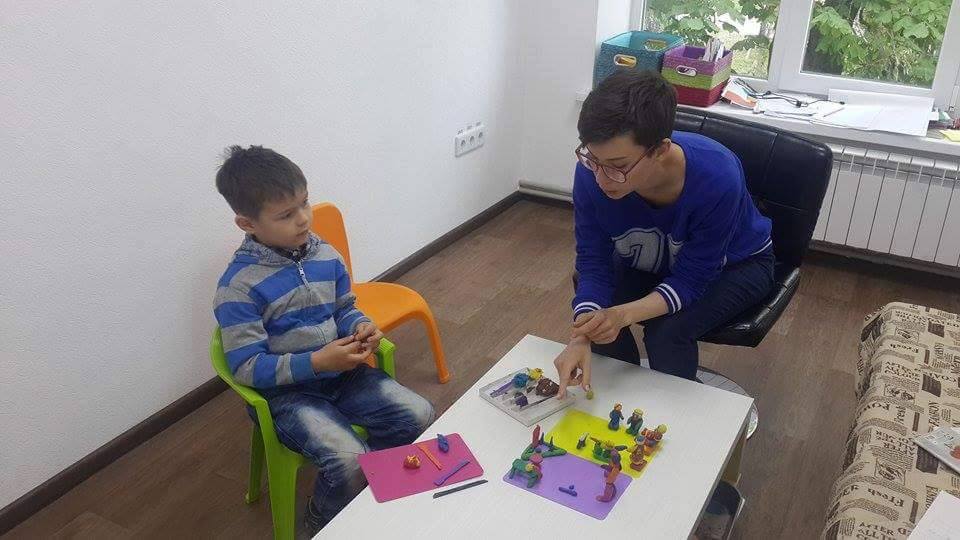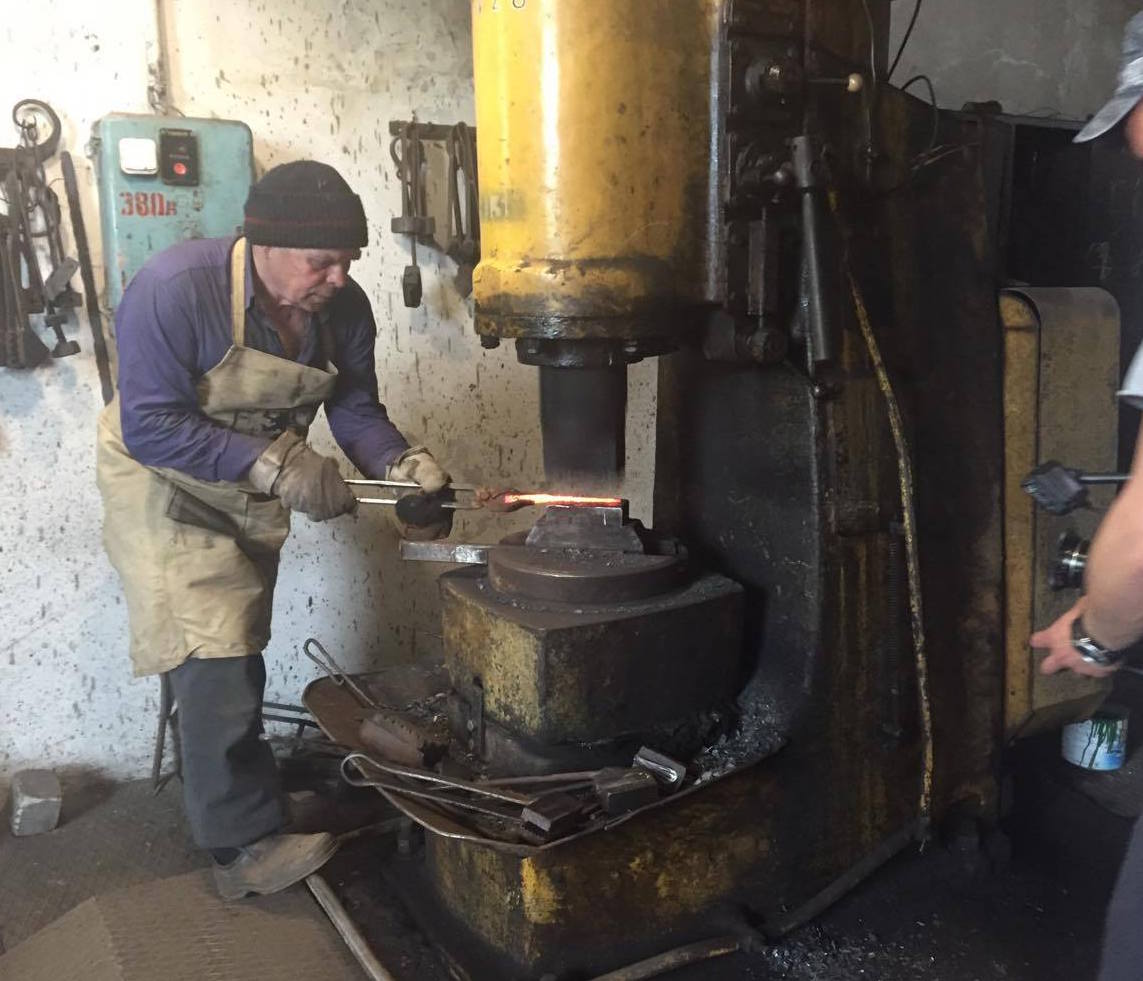Conflicts and quarrels within Ukrainian society have simmered over the past few years for many different reasons, but mainly due to revelations about the crimes perpetrated by the communist regime, a creeping atmosphere of revanchism, annual celebrations of the anniversary of the Ukrainian Insurgent Army (UPA), and attempts to recognize the OUN-UPA struggle at the state level and give OUN-UPA members the status of war veterans. Of course, this is taken for granted in western Ukraine, but in the eastern regions, the campaign against the recognition of the Ukrainian resistance movement continues.
There are historical reasons that explain the non-recognition of the Ukrainian liberation movement by some regions of Ukraine. During the Soviet era, the communist propaganda machine worked relentlessly in the eastern regions of Ukraine (by eastern regions, we refer to territories on the Left Bank of Ukraine-Ed). More than thirty years of falsifying the history of the nationalist movement and creating all sorts of myths about collaborationism and mass terror against the civilian population have paid off. Stereotypes, such as “criminal nationalists” and “Ukrainian-German bourgeois nationalists” were firmly inculcated into the minds of ordinary citizens. Therefore, it is no surprise that publications about crimes perpetrated by the OUN and the UPA still find a receptive audience among many Ukrainians living in the eastern regions. And yet, such narratives often confuse and link historical data and names without sufficient explanation. For example, the Halychyna (Galicia) Division is frequently confused with the UPA and OUN movements led by Stepan Bandera.
It is a well-known fact that Bandera’s OUN and the UPA Supreme Command opposed the formation of a Ukrainian military division in the German army, seeing Germany as an enemy of the Ukrainian nation, just like the Soviet Union. In their reports from occupied Ukraine, the Germans noted that Bandera’s OUN had launched a strong campaign against the enlistment of Ukrainians in the Galicia Division. In one of their propaganda leaflets, the OUN command wrote that the creation of such a combat unit constituted an act of surrender to the Germans. Thus, there should be a little less talk of OUN-UPA collaboration with the enemy, and actual historical facts and figures should be brought to light and explained by historians.
Unfortunately, there are many examples of distortions of such historical facts and figures. This underlines the importance of studying why so many Ukrainians residing in the eastern regions have such a negative perception of the OUN-UPA fight for Ukrainian independence. It is more than relevant because until there is harmony within society, Ukraine will remain disorganized and agitated. A country where society is in constant turmoil cannot hope for stable development. To overcome this pervasive disease, Ukrainians need to know their history. Only by studying the origin and evolution of the OUN-UPA movements, as well as other important historical events, can Ukrainians rid themselves of this ignorance, which generates such hostility.
In this article, we examine the reasons for the hostility to the Ukrainian resistance movement through the prism of popular myths that still prevail in the minds of many Ukrainians living in the eastern regions. There are many such myths, but we will consider the three main ones.
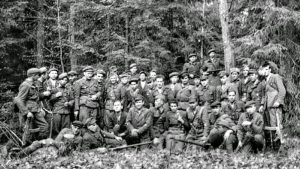
Myth No.1: The OUN and the UPA operated only in western Ukraine
In order to keep Ukraine within the USSR and suppress nationalist organizations, Soviet propaganda repeatedly underlined the fact that the UPA-OUN movement was created in nationalist Halychyna (Galicia) as an instrument against eastern Ukraine. Thus, Ukrainian society was divided into two warring camps: western and eastern Ukrainians. This was useful for the Soviet system, because a society divided into several camps is unable to mobilize and fight effectively for its independence. Moreover, communist propaganda constantly emphasized that nationalism was not characteristic of the inhabitants of the eastern regions.

In fact, nationalism originated in Left-Bank and in eastern regions. The ideologue of Ukrainian nationalism, Dmytro Dontsov, was from Melitopol, Zaporizhzhia Oblast. Similarly, almost half of the members of the first Ukrainian Nationalist Leadership (organization for coordinating the activities of Ukrainian nationalist organizations-Ed) originated from eastern Ukraine.

Such noted figures of Ukrainian nationalism as General Mykola Kapustiansky, Yevhen Onatsky, General Marko Bezruchko, and many others were from Left-Bank Ukraine. In point of fact, as organized nationalist groups emerged and spread in western Ukraine, the same phenomenon took place in the Soviet sector of Ukraine, but with some specificity.

Cultural nationalism became further diffused and extended in the eastern regions in the 1920s and 1930s, although there were several attempts to organize an armed underground struggle. However, the repressive NKVD system very quickly eliminated the slightest germs of nationalism. Despite persecution and repression, new cadres were formed, and the nationalist movement and ideals spread underground across the entire Ukrainian SSR.

When all is said and done, it is not surprising that, during the German-Soviet war (Operation Barbarossa, June 22, 1941), the OUN underground network covered the entire territory of Soviet Ukraine, including Crimea and Kuban. OUN cells in the eastern lands were usually created by members of special “travelling” OUN units arriving from other regions of Ukraine, but they always included local people. A large number of locals already had strong nationalist convictions when OUN members arrived, which once again confirms the thesis that nationalism is an inherent trait in the eastern regions, and was not simply exported from western Ukraine.
Although the Ukrainian Insurgent Army was initially formed in Volyn in 1942, it very quickly spread to the whole of western Ukraine and to the Right-Bank regions, where the UPA-South group operated. At the same time, the nationalist movement continued to grow and expand towards Left-Bank Ukraine. Recently discovered reports show that two UPA detachments operated in Sumy Oblast as well. Underground combat groups were created in Dnipropetrovsk Oblast, and were subsequently added to the UPA-South group.
Myth No.2: Only western Ukrainians took part in OUN and UPA movements
This myth was created for the same reasons as the first one. As mentioned above, people from the eastern regions of Ukraine contributed to the foundation of the OUN. If we analyze the contribution of eastern Ukrainians to the OUN-UPA liberation struggle, we would need several pages just to name all the figures of the national resistance movement who were born and raised in the Soviet-controlled territories of Ukraine.
Why did eastern Ukrainians take part in the OUN and UPA? Simply because communist propaganda, Marxist-Leninist ideology, repressions and famines did not kill the spirit of freedom in these people; they refused to adopt the Soviet model, to renounce their family and clan or bow to the "mighty Soviet Union”. The reasons for this are obvious: nationalism continued to develop in conditions of rigid Soviet totalitarianism. It is clear that it did not spread as quickly or widely as in western Ukraine, but it grew and attracted more and more locals. Moreover, after 1939, eastern Ukrainians, particularly the young people - the most revolutionary group of society – had the opportunity of getting to know the life, customs, and habits of western Ukrainians.

Students from eastern Ukraine began studying at higher educational institutions in the western regions and met western classmates and colleagues, a significant percentage of whom belonged to the OUN. They got acquainted with the principles of patriotic activism and the nationalist movement. It was at this time that Yosyp Pozychaniuk, one of the future leaders of the OUN and UPA armed struggle, joined the OUN. He was sent to Halychyna by the Komsomol to recruit members and strengthen the communist youth movement, but, after being introduced to the principles of the national liberation struggle, he devoted himself entirely to this cause.
In his memoirs, Yosyp Pozychaniuk
writes about his transformation, how he became a Ukrainian patriot:
“One Sunday, I went to Lychakiv Cemetery in Lviv to look at the graves of Ukrainian Sich Riflemen. And what did I see? In front of me, in carefully formed rows, lay concrete-covered well-kept graves with crosses; some of them had inscriptions and surnames, others just two letters - NN, that is, unknown fighters with “no names”. Fresh flowers lay on most graves. So, even during those harsh years of persecution, someone continued to lay flowers on the graves. I suddenly realized that the ideals that connect the dead with the living were still very much alive. It was a turning point in my life. I returned home and couldn’t find peace for a long time. I knew it was true, but for some reason the authorities wanted to wipe it all out. The “reds” don’t want anyone to know the truth, unless it fits into the Bolshevik framework. But, the truth should be known! I was upset and anxious, so I went to see Yuriy Stefanyk (son of the famous writer Vasyl Stefanyk), and he explained everything to me. Yuriy risked his life and gave me his memoirs about 1918 in Lviv and Halychyna. At that moment, I became a Ukrainian patriot. My heart and soul finally understood the language of the graves…”
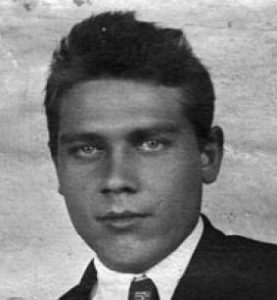
Panteleimon Sak from Kyiv Oblast was also sent to western Ukraine by the communist party in 1939, but joined the OUN in 1940. During the German-Soviet war, he headed the OUN in the central and eastern regions and edited the underground newspaper “За самостійну Україну” (For an Independent Ukraine).
It should be noted that the OUN prioritized its activities in the eastern regions and closely monitored all the events in those areas. OUN-B* documents show that the OUN command was ready to focus more attention on the eastern regions.
. After the start of the Axis invasion of the Soviet Union on June 22, 1941 (Operation Barbarossa), the OUN-B - in the person of Yaroslav Stetsko - declared an independent Ukrainian state on June 30, 1941 in occupied Lviv, while the region was under the control of Nazi Germany. In response, the Nazi authorities suppressed the OUN leadership. In October 1942, the OUN-B established the Ukrainian Insurgent Army (UPA).
The OUN leadership understood that the strength of the Ukrainian liberation front depended on creating a successful and patriotic underground network in eastern Ukraine and involving as many locals as possible in the resistance movement. Therefore, it is no surprise that so many eastern Ukrainians joined the OUN during the German-Soviet war.

As for the Ukrainian Insurgent Army (UPA), it would never have been able to launch such large-scale activities in 1942-1952 without the participation of eastern Ukrainians. In no way does this diminish the role of western Ukrainians in the creation and organization of the Ukrainian Insurgent Army. But, with the arrival of men from the eastern regions, who had served in other armies (the Ukrainian National Republic (UNR) army, the Red Army), the UPA army significantly strengthened its forces.

Former soldiers and officers of the UNR army joined the UPA for obvious reasons: they saw the UPA army as a legitimate force fighting for Ukraine’s independence. Among the most renowned fighters of the Ukrainian National Republic (1918-1921), who subsequently served in the UPA: UNR Colonel Mykola Omeliusik (call sign “Polishchuk”), UNR Lieutenant Colonel Leonid Stupnytsky (call sign “Honcharenko”) who became Chief of the UPA General Staff in Volyn Oblast, UNR Lieutenant Colonel Ivan Lytvynenko (call sign “Yevshan”, “Morozenko”) who was member of the National Military Staff of the Ukrainian Insurgent Army-North, Head of the UPA Intelligence Department, etc.
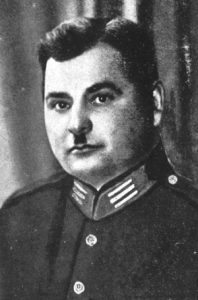
As for the many soldiers and officers of the Red Army who joined the UPA, one interesting question arises: what prompted them to change sides? First, we must analyze why UPA activities attracted Red Army soldiers to its ranks. Men who served in the Red Army had been raised under a brutal Soviet totalitarian regime; they had survived famines, repressions, and total russification. Therefore, after getting acquainted with the program and principles of the UPA liberation movement, many Red Army soldiers, who had also been raised as Ukrainians, decided to change sides. Ukrainian partisan soldiers distributed flyers to Red Army servicemen, appeals written especially for them, as well as underground literature, which spoke of the liberation movement and the UPA, which was fighting for the freedom of the press, speech, thought, belief, faith, and against the official imposition of authoritarian doctrines and dogmas.
The history of the enrolment of eastern Ukrainians into the Ukrainian Insurgent Army consists of several periods with its own specifics (this does not include the UPA-South group, whose members were all from eastern Ukraine, because it operated on the Right Bank).

- 1942 - end of 1943. During this period, there were no official Red Army combat units in western Ukraine, but there were many Red Army soldiers, who had remained in western Ukraine for different reasons during the retreat of the Soviet armed forces. The UPA Supreme Command often appealed to them to join the national resistance movement. During this period, the following prominent commanders joined the UPA movement:
Dmytro Karpenko, call sign “Yastrub”, “Liuty” (Lieutenant of the Red Army) from Poltava Oblast, commander of the Siromantsi Sotnya, organizer of UPA international divisions, and the first to be awarded the Golden Cross of Military Merit (posthumously);

Mykola Savchenko, call sign “Petro Mykolenko”, “Baida” (Lieutenant of the Red Army) from Poltava Oblast, commander of the Skhidniaky (Eastern) Sotnya, which consisted exclusively of former Red Army soldiers and men from the eastern regions, commander of special raiding units;
Ivan Kulyk,
call sign “Siryy” (Senior Lieutenant of the Red Army) from Donetsk, UPA commander, OUN district leader, and many others.
Most former Red Army soldiers had combat experience and therefore served as first-class instructors in UPA training schools for officers and non-commissioned officers.

- end of 1943-1952. During this period, many OUN members from the eastern regions joined the UPA and the armed underground resistance movement. The Red Army returned to Ukraine in full force, followed by a repressive state apparatus, so the UPA underground formed combat groups and relocated to western Ukraine to continue the fight for freedom (some local OUN units remained in eastern Ukraine).
During this period, many Red Army soldiers joined the ranks of the UPA. Even when the Soviet army defeated Germany, such phenomena continued. In fact, Red Army soldiers, who had fought in Europe, had a glimpse of life in European towns and cities and realized that it was necessary to fight the totalitarian order that existed in the USSR. The only resistance movements at that time were the OUN and the UPA.
Myth No.3: The main goal of the UPA was to fight and eradicate the Red Army
This myth was created simultaneously with the myth of total collaboration of the OUN and UPA with Nazi Germany. However, despite instances of collaboration with the German occupying administration in order to consolidate the establishment of an independent Ukraine, if we analyze UPA battles and raids against the German troops, the question of constant and total collaboration should be dispelled. During the German occupation, the UPA conducted hundreds of raids on police stations and military convoys. According to German general Ernst August Kostring, UPA fighters “fought almost exclusively against German administrative agencies, the German police, and the SS in their quest to establish an independent Ukraine controlled by neither Moscow nor Germany”.

As for the relations between the UPA and the Red Army, it is important to note that both confrontation and interaction were used to promote the final cause. Confrontation was caused by the military-political situation. The Red Army offensive posed an important objective for the UPA: the partisans wanted to remain on Ukrainian soil, so their goal was to cross the German-Soviet front and fight in the Soviet rear. UPA soldiers initially tried to cross the front lines openly, but NKVD and Red Army units were quick to eliminate UPA-South groups.
As the UPA was a partisan army, it could not resist a regular army in open battle. UPA soldiers fought the Red Army only if they had to defend themselves. Their main task was to distribute underground literature among Red Army servicemen with calls to join the UPA or, at least, not to fight against the Ukrainian liberation movement. This can be corroborated in UPA documents, where there are direct references to the Red Army.
Thus, Order No.29 dated January 6, 1944 “To group commanders and commanders of military districts” underlines that the partisans should not provoke the Red Army, but should spread nationalist ideals and propaganda. The UPA published many materials for Red Army soldiers of various nationalities and, in particular, Ukrainians. This paid off. There were cases when some Red Army soldiers even helped the UPA, distributed insurgent literature, sabotaged the orders of their command, and refused to fight the partisans.
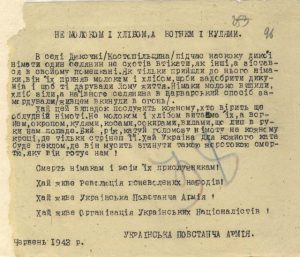
An important aspect that influenced the consciousness of the Red Army was the attitude of the UPA towards prisoners. Unlike the NKVD troops, who treated captured partisans and the population in a brutal and violent manner, the UPA usually released the prisoners (except for those who took part in criminal activities against the Ukrainian population; these cases were tried by the revolutionary tribunal). This was clearly stated in a manual called “Instructions for treating prisoners”.
Conclusion
Thus, analyzing the three myths, we can draw certain conclusions. In many Ukrainian circles, the history of the OUN-UPA liberation struggle is still interpreted according to old Soviet clichés. Some, distorting the truth, will liken these movements to criminal bandit groups, while others look for something new in what has already been established. As a result, the attitude of eastern Ukrainians to the OUN-UPA has not changed so much. Literature about the OUN-UPA, which objectively reflects the picture of events, sometimes gets to the eastern regions but is seldom promoted through the media. In the long run, it is the East of Ukraine that needs to know more about the OUN and the UPA, and more particularly, specific information linking the eastern regions and their people to OUN-UPA activities.
Here are some priority topics that can be further explored by historians and shared by different media:
- participation of eastern Ukrainians in the OUN-UPA, their contribution to the fight for an independent and united Ukraine;
- Ukrainian nationalism in the Ukrainian SSR in the 1920s-1930s;
- the UPA and the Red Army;
- the activities of special NKVD units operating as disguised OUN-UPA groups;
- debunking the myth of total OUN-UPA collaboration with Nazi Germany, etc.
These topics can be taken up and studied not only by enthusiastic researchers, historians and scholars, but should also be promoted by the state. Because if the government wants Ukraine to develop into a normal democratic state, they must learn to deal with social crises and misunderstandings, and work towards achieving harmony and unity in Ukrainian society.
Most importantly, it is essential that Ukrainians, meaning people in eastern, western, northern and southern territories liberate themselves of Soviet narratives that remain so deeply ingrained in their lives, bring to light unknown pages of their history, and create their own historical and cultural narrative – one based on facts and figures, and not legends and populist tales - thus uniting and consolidating an independent and democratic Ukraine.
In one of his memoirs, OUN leader Yosyp Pozychaniuk recorded some prophetic words that should never be forgotten:
“The USSR will collapse, because it must collapse. An Independent and United Ukrainian State will emerge and will be consolidated, because it must be so. Not because we want this to happen, but because it will be a logical consequence and culmination of all the historical events, of social and political development and the revolutionary struggle in the East. It must be so!”

